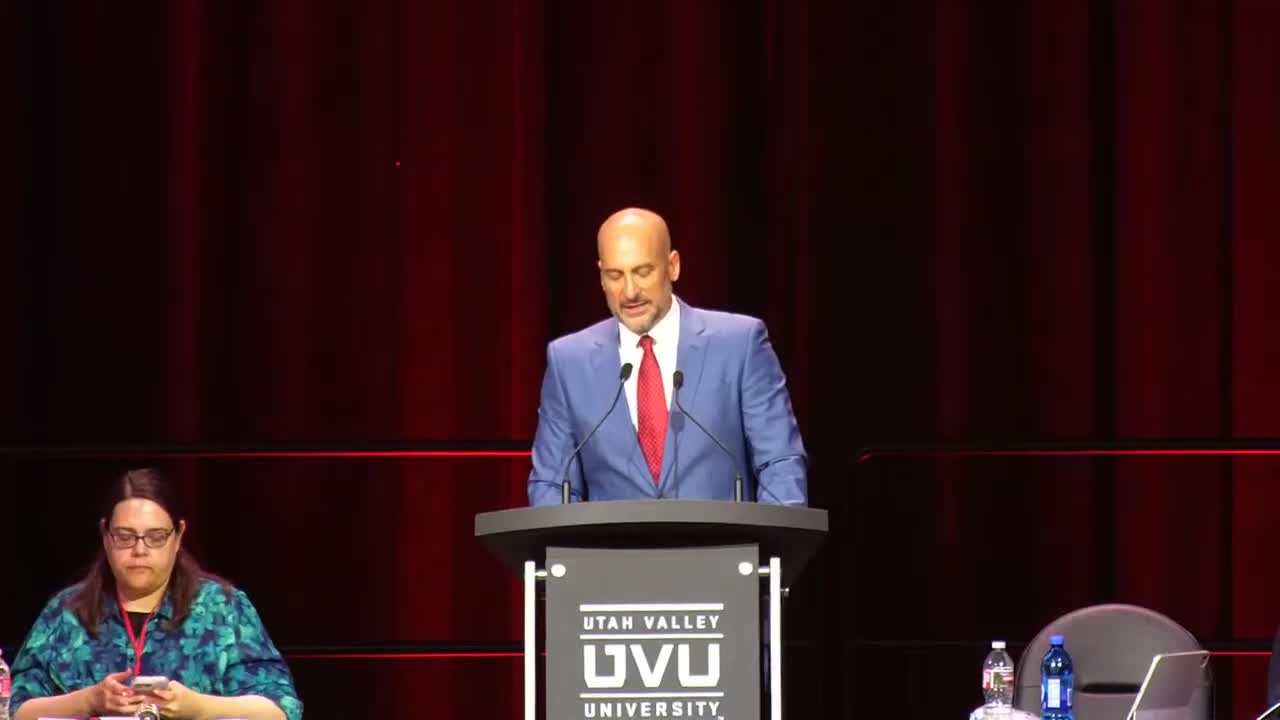Olivia Horlacher Williams and Stafford Seivert clash in Republican leadership debate
May 18, 2025 | Adam Bartholomew , Citizen Journalism , 2024 -2025 Utah Citizen Journalism, Elections, Utah
Thanks to Excel Chiropractic and Scribe from Workplace AI , all articles about Utah are free for you to enjoy throughout 2025!

This article was created by AI using a video recording of the meeting. It summarizes the key points discussed, but for full details and context, please refer to the video of the full meeting. Link to Full Meeting
The meeting commenced with Olivia Dawn Horlacher Williams addressing the delegates, expressing her commitment to restoring the party's core values. Williams criticized the current leadership for a lack of transparency and accountability, citing frustrations among delegates who felt stonewalled when seeking basic information. She pointed to issues during the caucus night, including a reported hacking incident and inadequate training for participants, which she argued undermined the party's integrity.

Before you scroll further...
Get access to the words and decisions of your elected officials for free!
Subscribe for FreeWilliams emphasized the need for grassroots involvement and a return to the party's foundational principles, urging delegates to reject the status quo and support her candidacy for secretary alongside Phil Lyman for chair. She articulated concerns over high taxes and legislation that she believes has eroded the party's freedom of association.
In response, Stafford Palmeri Seivert, the current secretary, defended her record and the leadership team's achievements over the past two years. She acknowledged the challenges faced with the new website but asserted that it was a necessary step towards building a more secure and efficient party infrastructure. Seivert highlighted her experience and proposed initiatives aimed at improving communication and operational efficiency within the party.
The convention also featured endorsements for chair candidates, with Rob Axon receiving support from various party members. Axon emphasized the importance of unity and adherence to the party's principles, cautioning against internal conflicts that could weaken their position against Democratic initiatives in Utah.
The discussions underscored a divide within the party, with candidates presenting contrasting visions for its future. As the convention progressed, the emphasis remained on the need for a cohesive strategy to engage voters and uphold the party's values in the face of external challenges.
In conclusion, the Utah Republican State Convention served as a platform for candidates to articulate their visions and address pressing issues within the party. The outcomes of the elections and the direction taken by the leadership will be pivotal as the party navigates the political landscape in the coming years.
Converted from Utah Republican State Convention 2025 Axson v Lyman meeting on May 18, 2025
Link to Full Meeting
Comments
View full meeting
This article is based on a recent meeting—watch the full video and explore the complete transcript for deeper insights into the discussion.
View full meeting





